Yakima StageTwo
Test Location: Colorado
Test Duration: 4 months
Mounted to: 2002 Lexus RX 300
Blister’s Measured Weight: 61.6 lb (27.9 kg)
MSRP: $749
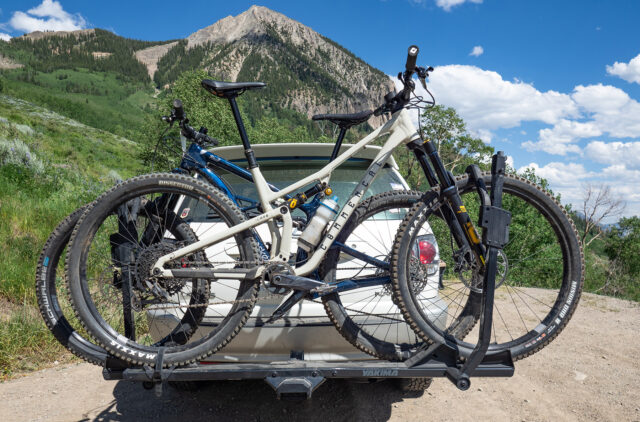
Intro
Yakima is a very well-known player in the vehicle rack industry, making a product to carry just about anything outdoors-related on a vehicle. And that includes bicycles, for which they have several rack options, from roof racks to ones that attach to the trunk of a sedan, to several styles of hitch racks.
Yakima’s StageTwo is their highest-end tray hitch rack, utilizing a simple and familiar design, but also integrating several features that you’d expect at its price point. I’ve been using this rack for the past few months of my riding season, and I’ve come away very impressed.
Design, Features & Impressions
The StageTwo is a tray-style hitch-mount rack, with one swinging arm that holds each bike by the front tires, as well as a sliding buckle system to secure the rear wheel. Because of this design, there’s no frame or fork contact to rub or scuff anything, and the StageTwo also has a tiered and offset design for the two trays so that neither bike contacts the other during transport. Yakima says that the StageTwo is compatible with 20” to 29” wheel sizes and tires up to 3.25” wide, and you can also accommodate fat bike tires up to 5” wide with the StageTwo Fat Bike Kit, which is sold separately. I’ve tried tires up to a 2.6’’ 29er, and the StageTwo accommodated them with no issues whatsoever. Additionally, the StageTwo can fit bikes with wheelbases up to 52” (1,321 mm), and my Large 2023 Santa Cruz Megatower, with its 49.8” (1,266 mm) wheelbase, fits just fine with room to spare. It is worth noting, though, that today’s longest bikes, such as the XXL Megatower with its 52.5” (1334 mm) wheelbase, might be slightly pushing the StageTwo’s limits.
The StageTwo is available in both a 2’’ hitch version as well as a 1.25’’ version. Both versions hold two bikes (up to 70 lb / 31.7 kg each) and the 2’’ version of the StageTwo can be expanded to accommodate two more bikes with an add-on tray, though doing so drops the per-bike weight limit to 40 lb (18.1 kg). The 1.25’’ StageTwo is capped at two bikes. The body of the rack as well as the swinging arms that secure the front wheels of the bikes on the StageTwo are made from steel, and the trays that the bikes sit on are made from aluminum (apart from the plastic front wheel trays). Because of the large amount of metal in this rack, it weighs a pretty hefty 61.6 pounds (27.9 kg). But, it is also worth noting that this rack is off-road rated to 42 lbs (19 kg) per bike, and its tiered design also adds extra ground clearance for these applications. So while it might not be the lightest, it is clear that Yakima was more interested in making a burly, durable rack.
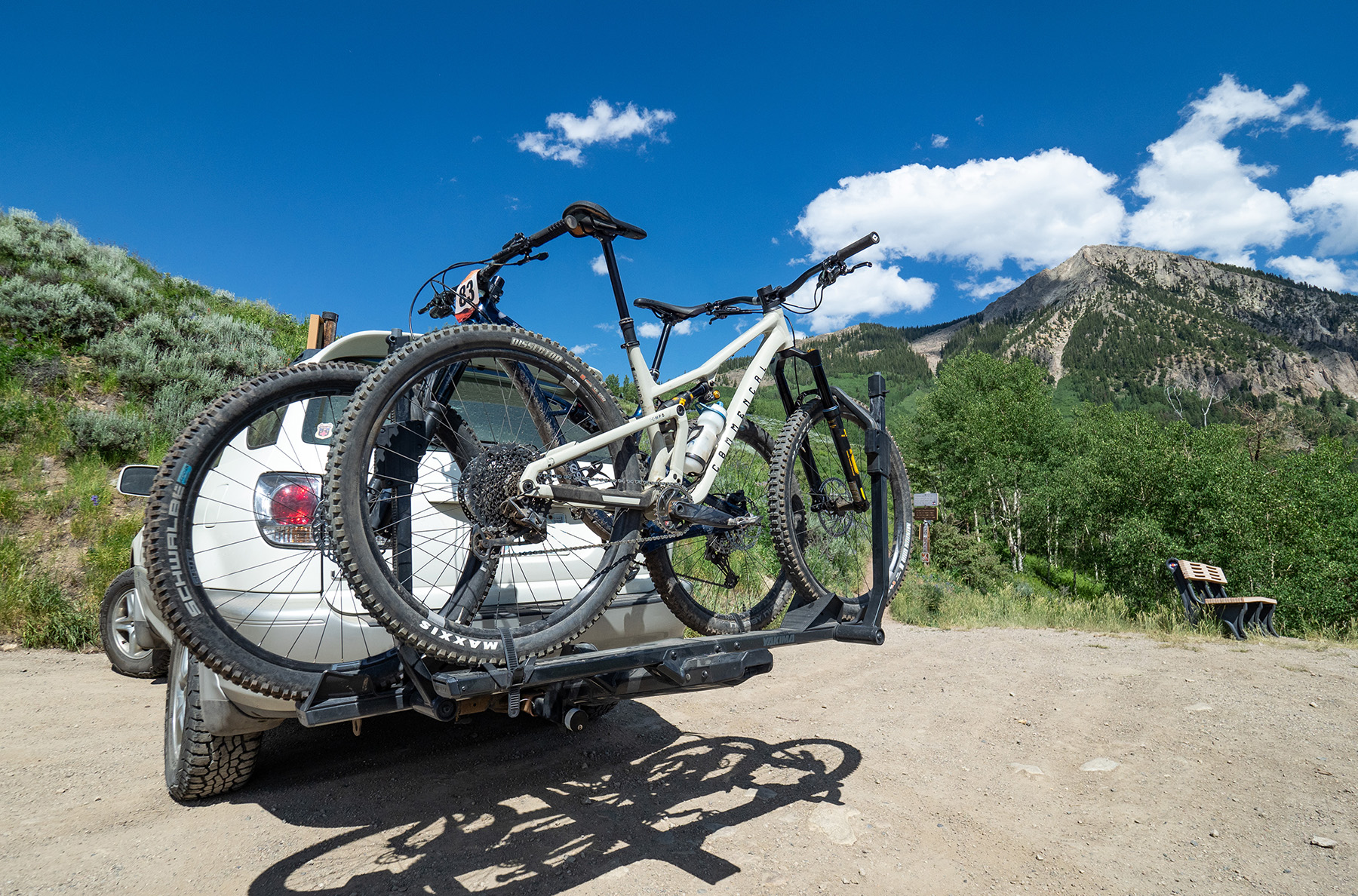
The way in which the StageTwo secures bikes is simple and easy. Simply place a bike in the tray, swing the front arm up and over the front wheel, and push it down, where it clicks in place. The bike is now completely supported, and you can walk around to the rear wheel where you can thread the straps over your rear wheel’s rim and into a buckle that secures it in place. This does mean that the bike is almost entirely supported via the front wheel, but I had no issues with security here. To release the bikes, all you need to do is release the rear wheel strap from the buckle, then press a button on the front swinging arms, lift the hooks that secure the wheel, and swing the arms out of the way.
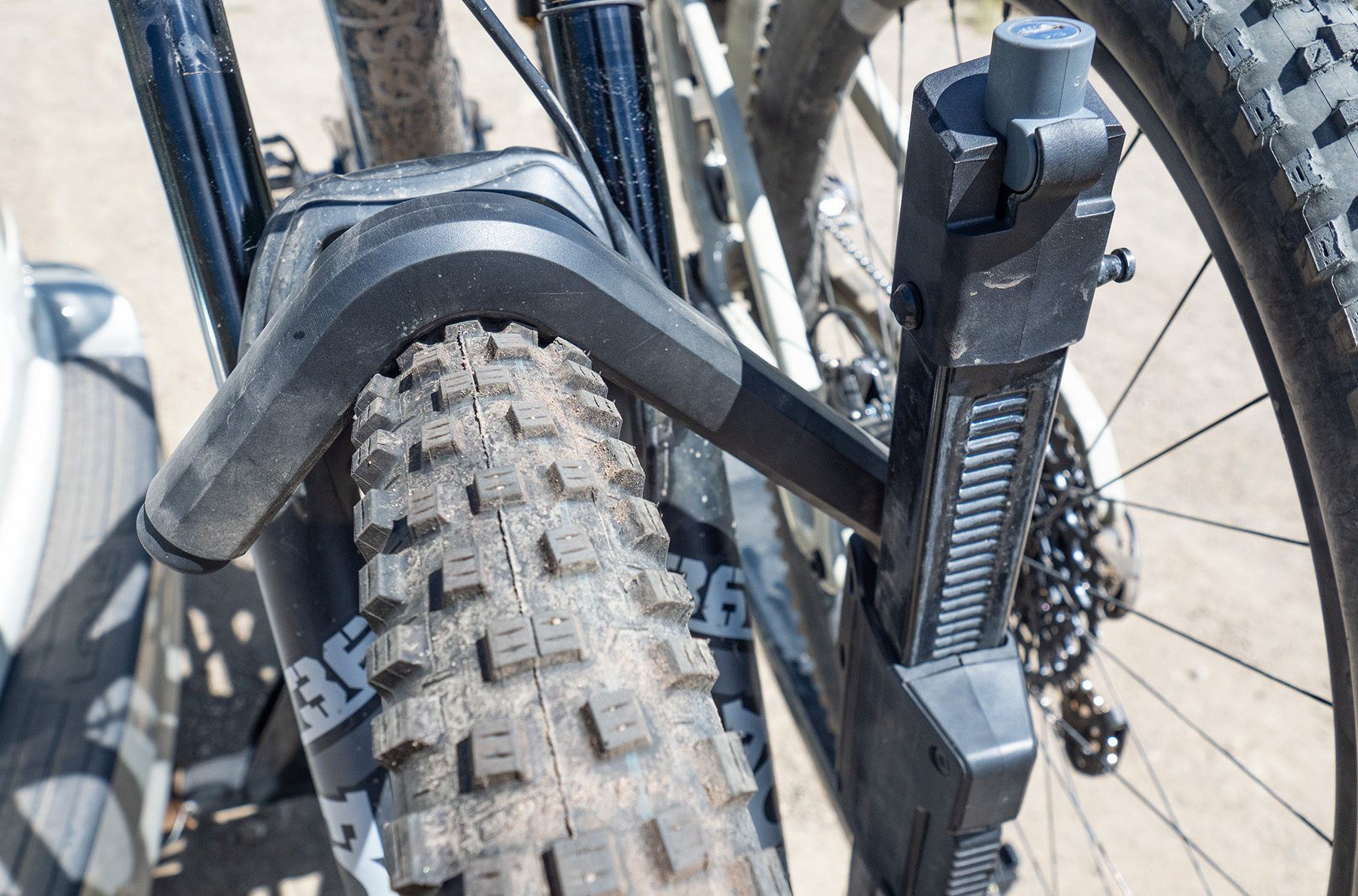

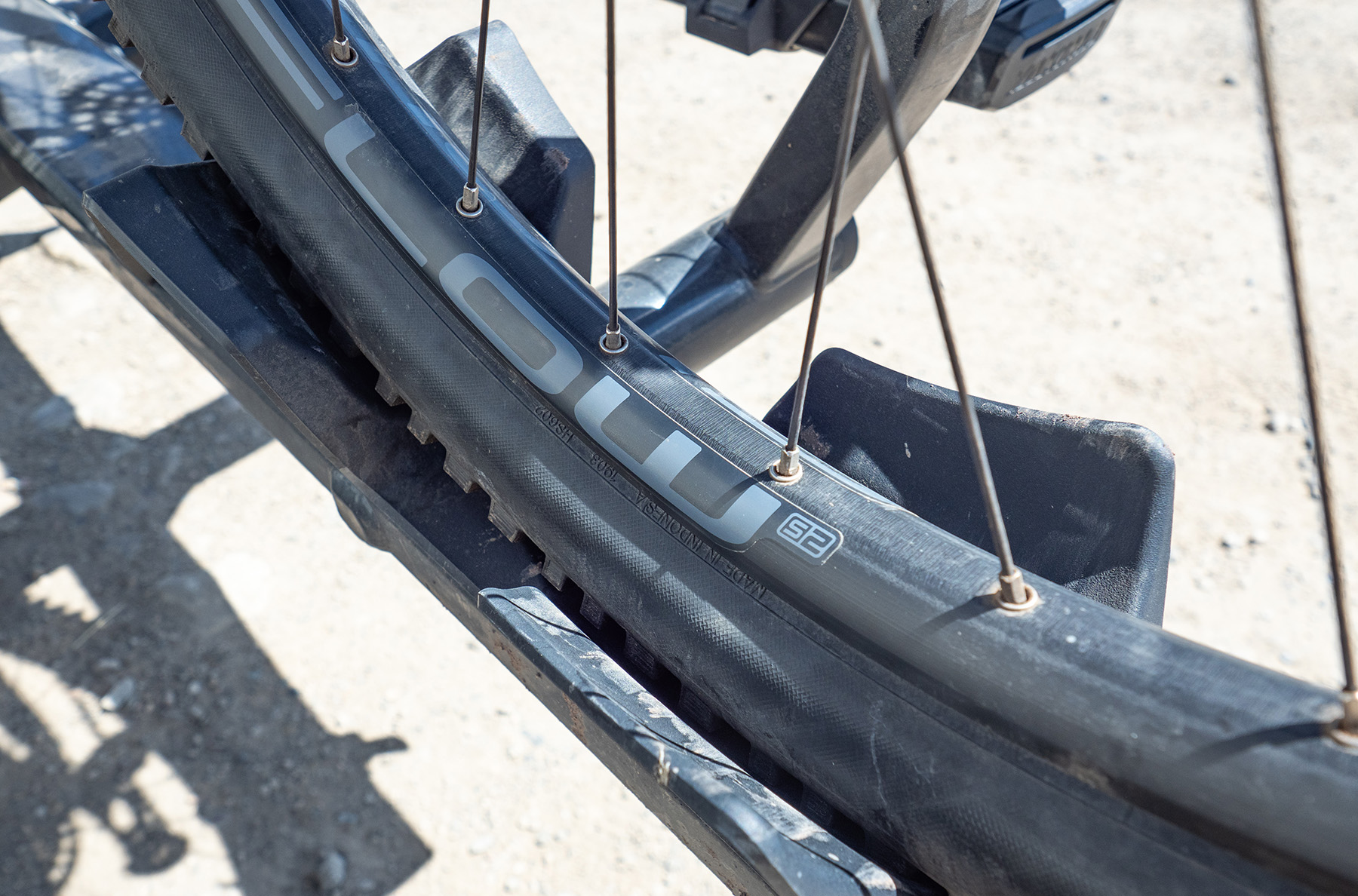
Another noteworthy feature of the StageTwo are the integrated locks. While they are pretty flimsy and short, only really able to capture the fork and front wheel, the StageTwo’s locks are easy to use and integrate into the swinging arms very cleanly. While most bike locks act as a deterrent rather than a truly theft-proof option anyway, the StageTwo also features a hard point on the steel body of the rack where you can attach any additional bike locks for extra security.
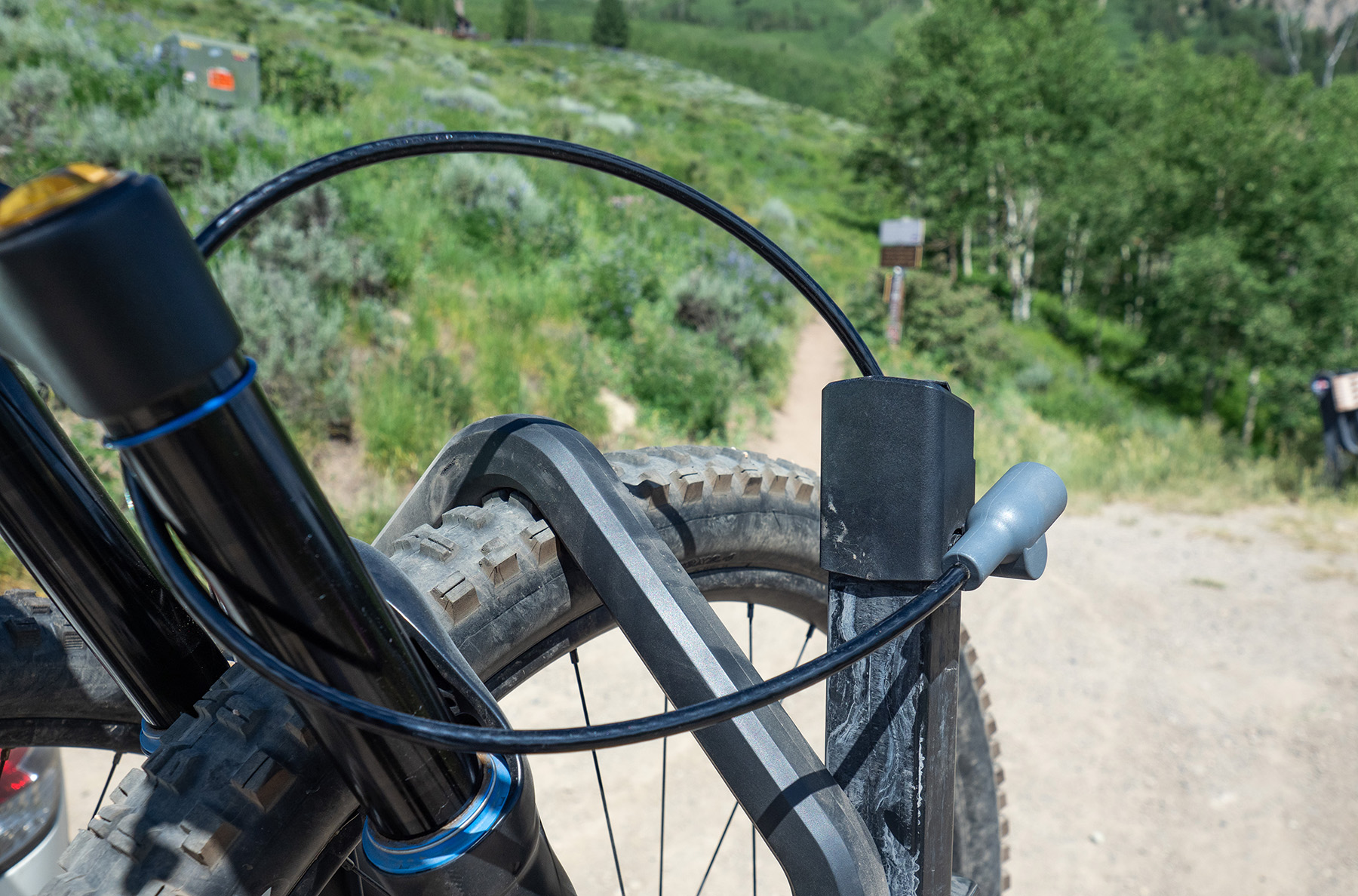
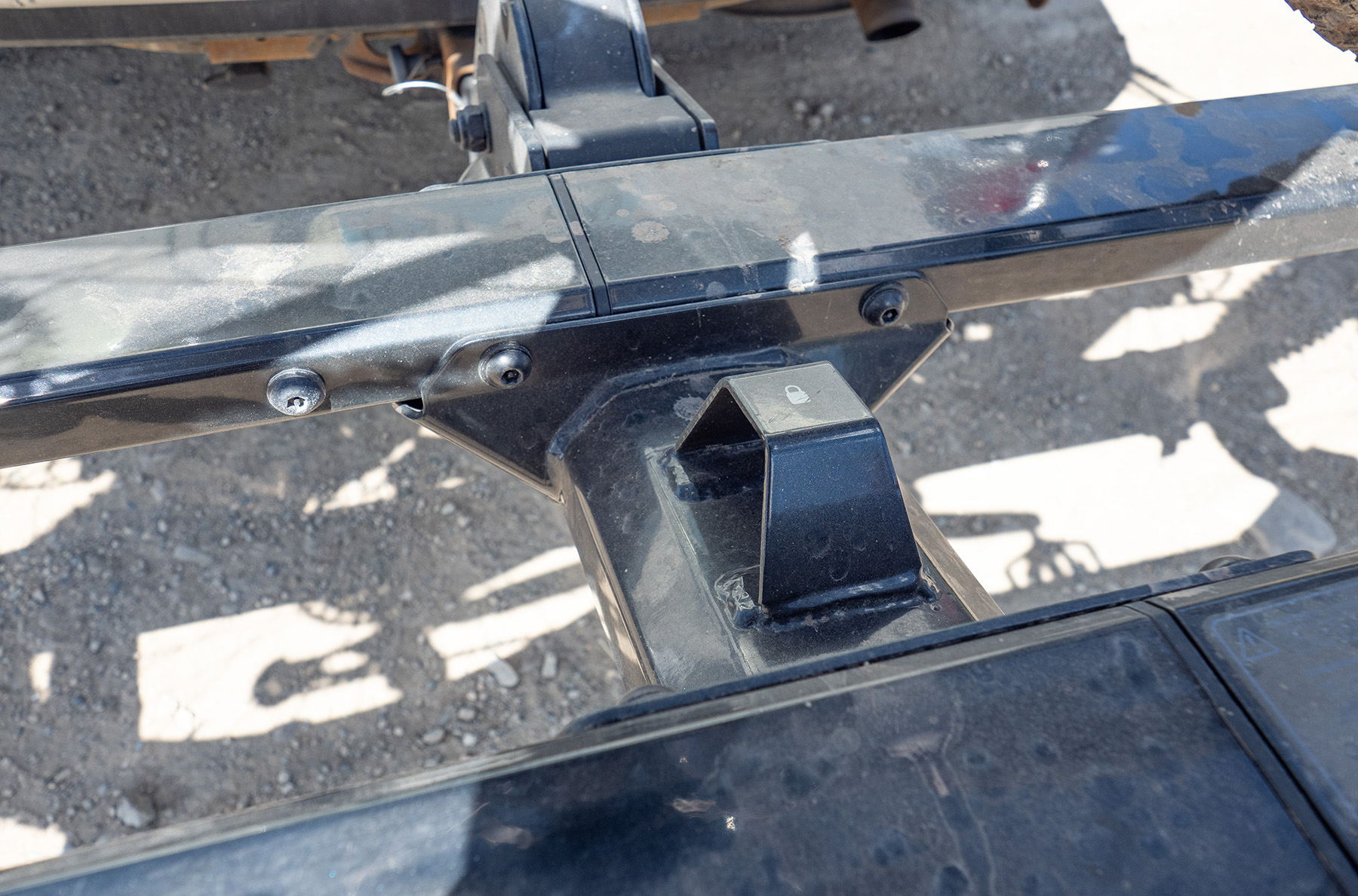
The StageTwo also locks to the vehicle via Yakima’s “SpeedKnob,” which is essentially a knob that makes it easy to tighten the rack into the hitch receiver, eliminating play. The SpeedKnob can also be locked into place using the same key as the integrated bike locks. The StageTwo also has a hitch pin for extra security, though it also eliminates the ability to adjust the rack in and out of the hitch receiver. I haven’t had any issues with this rack coming loose over time, even after hundreds of miles on Crested Butte’s often washboard-like summer roads. But, when I needed to take the rack off for the summer, it was very easy to release the SpeedKnob.
Additionally, the StageTwo can be tilted vertically when not in use, and it locks in place there. The StageTwo can also be tilted away from the car so that the rear trunk can be opened even with both bikes loaded on the rack. All of this is done via a handle on the very end of the rack body, making it quite accessible at all times. I’ve found that sometimes, it requires a little bit of wiggling the rack up and down to release this handle, but otherwise, this feature has been extremely handy.
And finally, Yakima offers a limited lifetime warranty for the original buyer on the StageTwo.
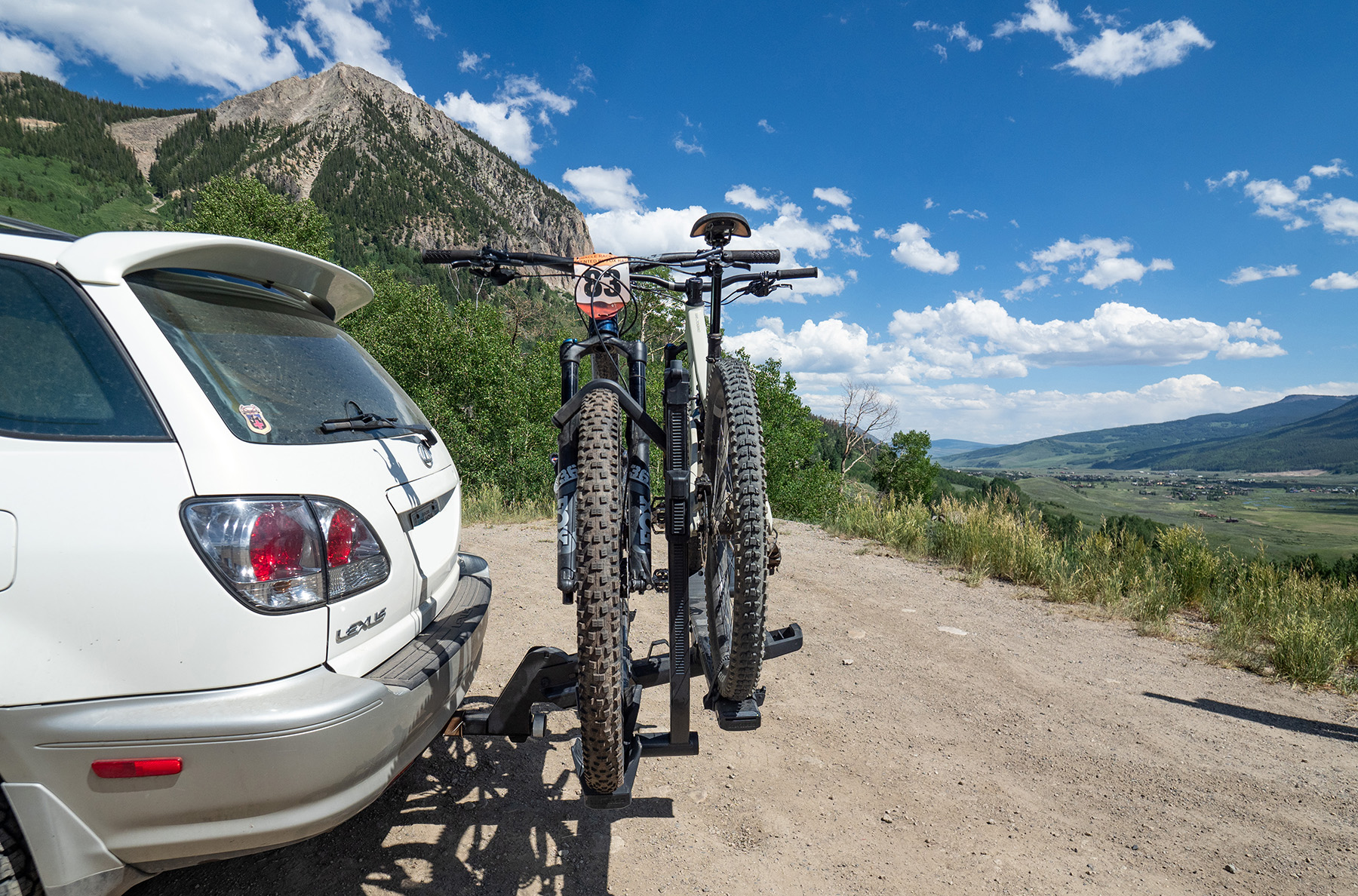
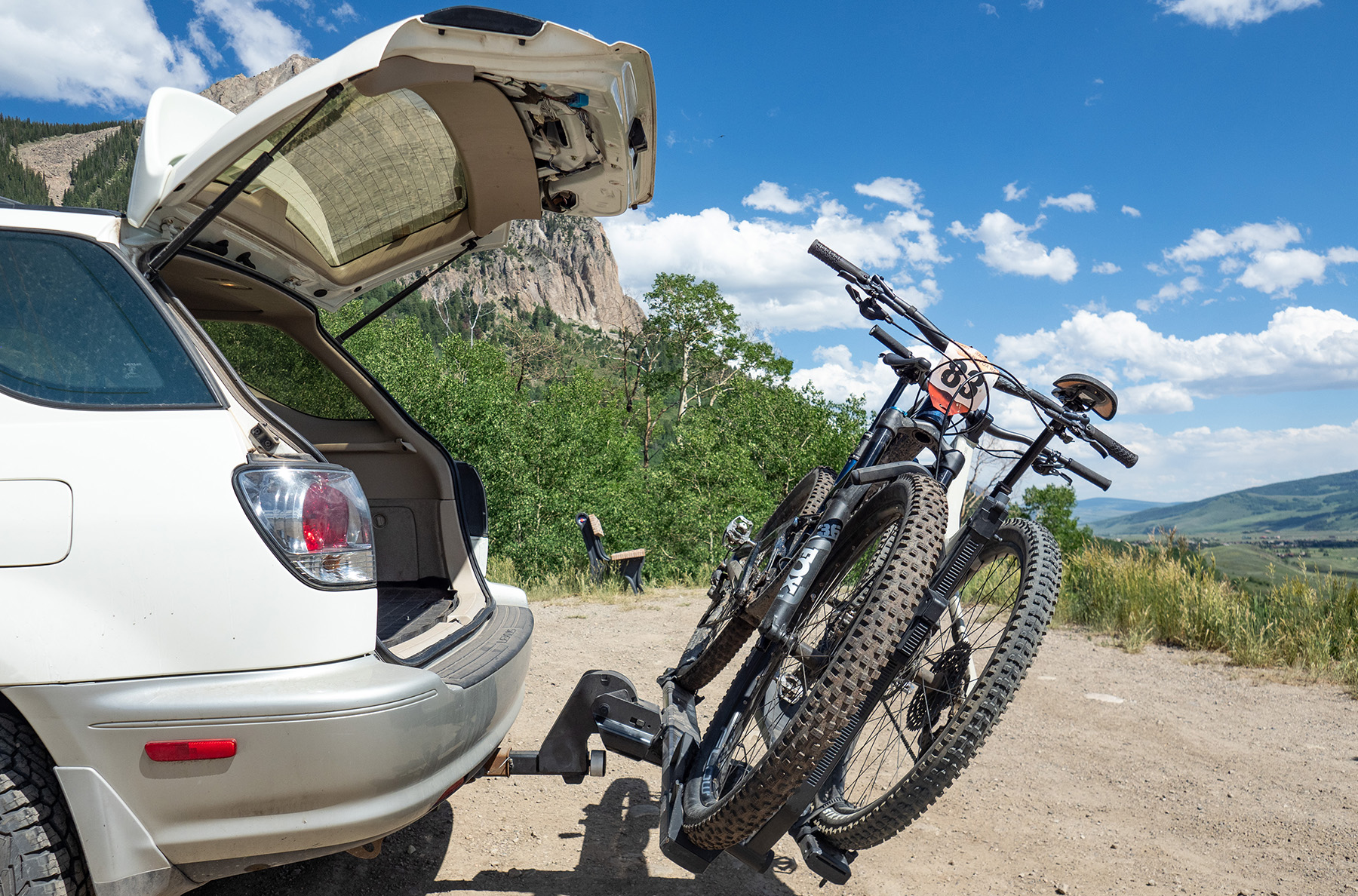
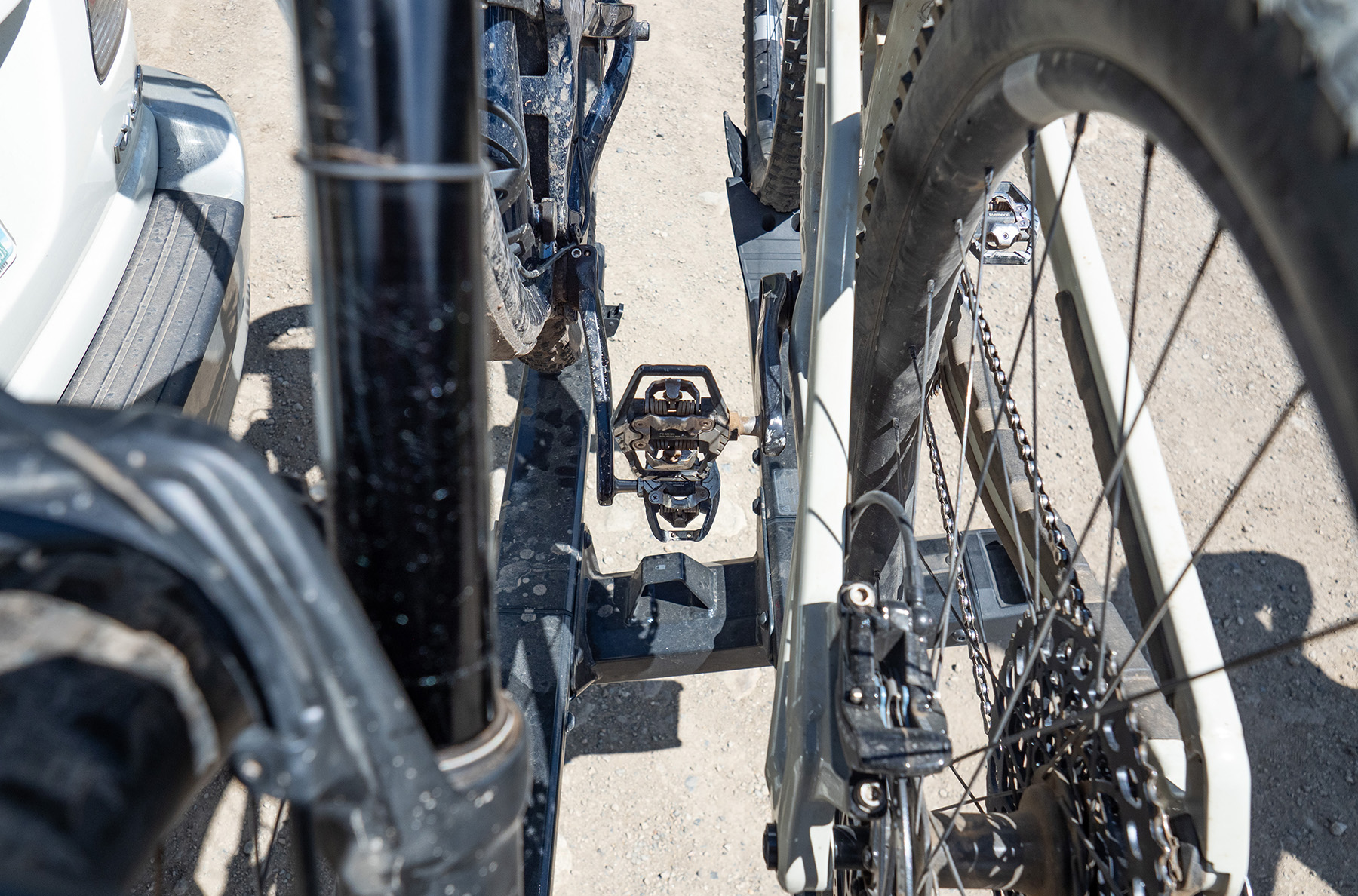

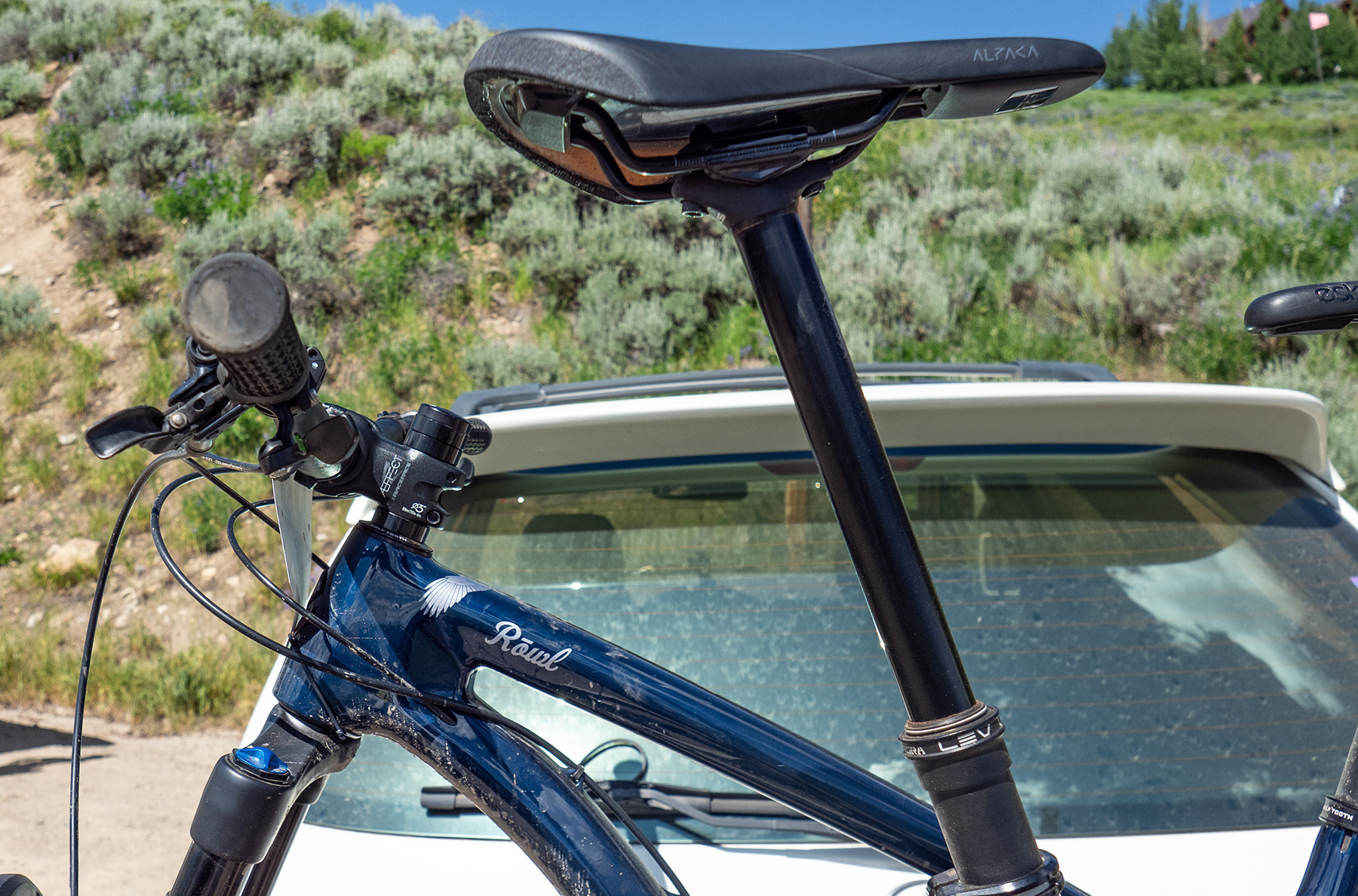
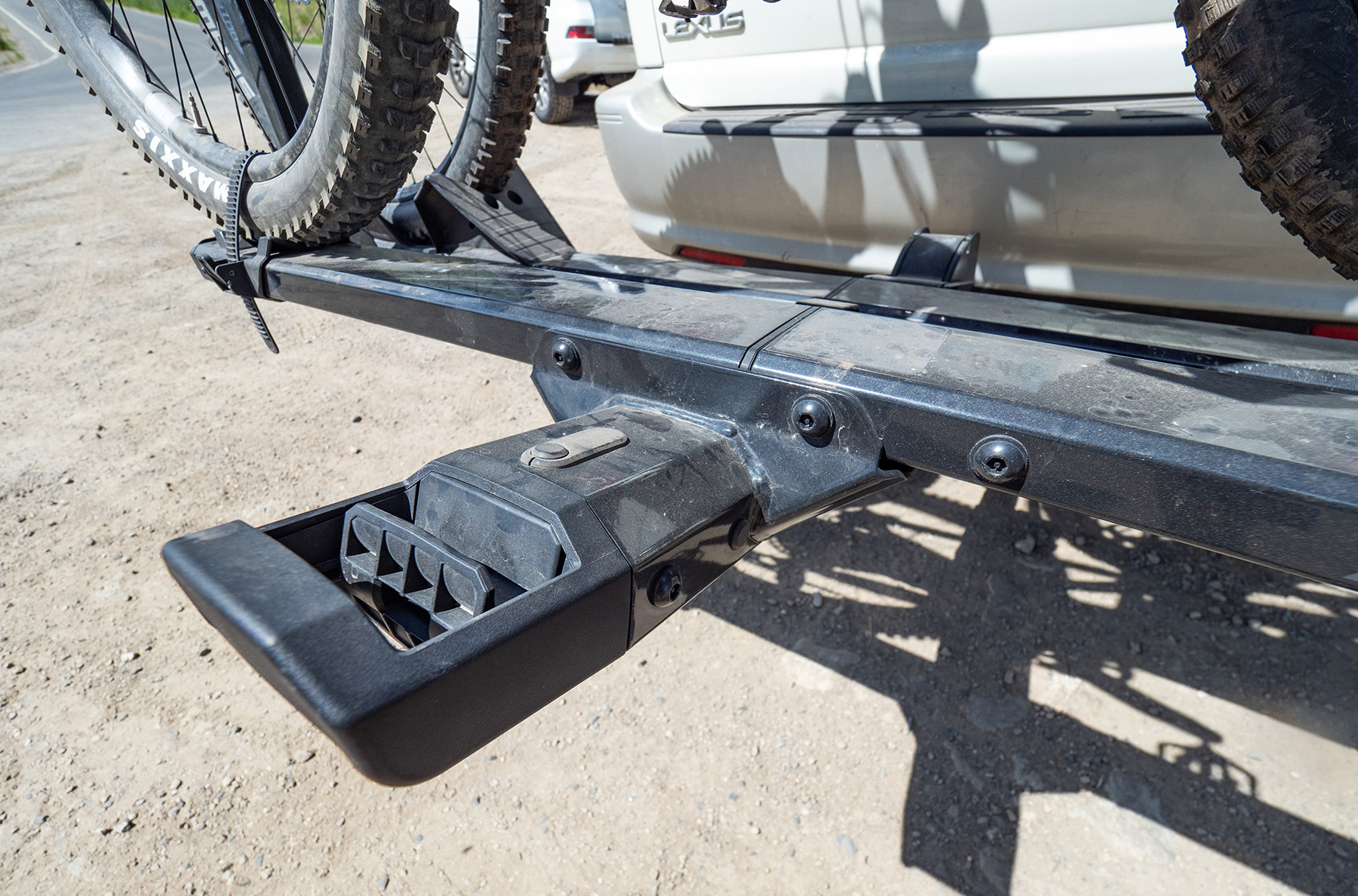

Bottom Line
Easy to use, sturdy, and thoroughly featured, the Yakima StageTwo bike rack has performed extremely well in transporting my riding partners and my bikes to wherever we are going to ride. There are cheaper options out there, but even among the more premium bike racks on the market, the quality and functionality of the StageTwo certainly justify its price tag.
The StageTwo is completely issue-free after three months of regular use, and I expect this bike rack to last me many years, potentially even outliving the car it’s currently mounted to. I plan to keep using the StageTwo and I will update this review if anything noteworthy pops up as I continue to use this excellent tray hitch bike rack.
